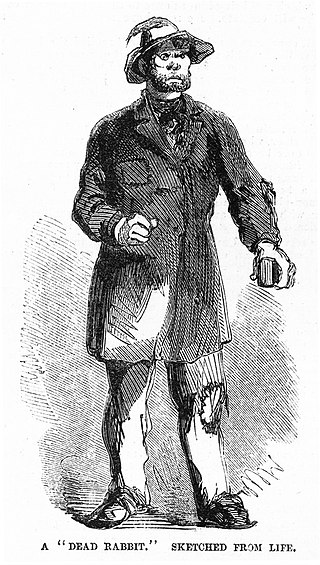
The Dead Rabbits was the name of an Irish American criminal street gang active in Lower Manhattan in the 1830s to 1850s. The Dead Rabbits were so named after a dead rabbit was thrown into the center of the room during a gang meeting, prompting some members to treat this as an omen, withdraw, and form an independent gang. Their battle symbol was a dead rabbit on a pike. They often clashed with Nativist political groups who viewed Irish Catholics as a threatening and criminal subculture. The Dead Rabbits were given the nicknames of "Mulberry Boys" and the "Mulberry Street Boys" by the New York City Police Department because they were known to have operated along Mulberry Street in the Five Points.
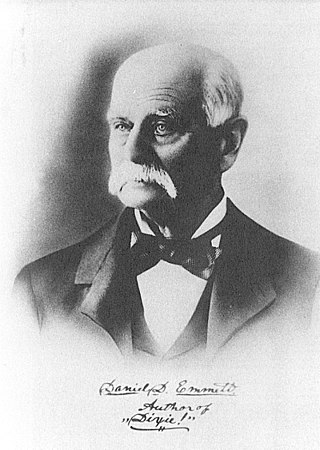
Daniel Decatur Emmett was an American composer, entertainer, and founder of the first troupe of the blackface minstrel tradition, the Virginia Minstrels. He is most remembered as the composer of the song "Dixie".
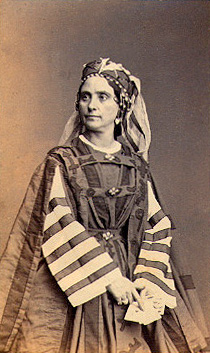
Céline Céleste-Elliott, known professionally as Madame Céleste, was a French dancer and actress who enjoyed great success on the London stage and during her four tours of America. She was also later involved in theatrical management. On her retirement from the stage she returned to Paris where she died in 1882.

The Bowery Theatre was a playhouse on the Bowery in the Lower East Side of Manhattan, New York City. Although it was founded by rich families to compete with the upscale Park Theatre, the Bowery saw its most successful period under the populist, pro-American management of Thomas Hamblin in the 1830s and 1840s. By the 1850s, the theatre came to cater to immigrant groups such as the Irish, Germans, and Chinese. It burned down four times in 17 years, a fire in 1929 destroying it for good. Although the theatre's name changed several times, it was generally referred to as the "Bowery Theatre".

The New York Clipper, also known as The Clipper, was a weekly entertainment newspaper published in New York City from 1853 to 1924. It covered many topics, including circuses, dance, music, the outdoors, sports, and theatre. It had a circulation of about 25,000. The publishers also produced the yearly New York Clipper Annual. In 1924, The Clipper was absorbed into the entertainment journal Variety.
"Clare de Kitchen" is an American song from the blackface minstrel tradition. It dates to 1832, when blackface performers such as George Nichols, Thomas D. Rice, and George Washington Dixon began to sing it. These performers and American writers such as T. Allston Brown traced the song's origins to black riverboatsmen. "Clare de Kitchen" became very popular, and performers sometimes sang the lyrics of "Blue Tail Fly" to its tune.

Thomas Souness Hamblin was an English actor and theatre manager. He first took the stage in England, then immigrated to the United States in 1825. He received critical acclaim there, and eventually entered theatre management. During his tenure at New York City's Bowery Theatre he helped establish working-class theatre as a distinct form. His policies preferred American actors and playwrights to British ones, making him an important influence in the development of early American drama.
The Bowery Amphitheatre was a building in the Bowery neighborhood of New York City. It was located at 37 and 39 Bowery, across the street from the Bowery Theatre. Under a number of different names and managers, the structure served as a circus, menagerie, theatre, a roller rink, and a branch of the Peniel Mission. The site is now part of Confucius Plaza.

The Chatham Theatre or Chatham Street Theatre was a playhouse on the southeast side of Chatham Street in New York City. It was located at numbers 143-9, between Roosevelt and James streets, a few blocks south of the Bowery. At its opening in 1839, the Chatham was a neighborhood establishment, which featured big-name actors and drama. By the mid-1840s, it had become primarily a venue for blackface minstrel shows. Frank S. Chanfrau restored some of its grandeur in 1848.
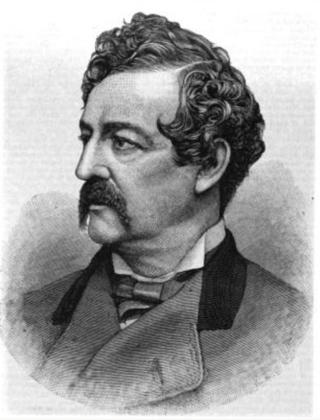
Francis S. Chanfrau was an American actor and theatre manager in the 19th century. He began his career playing bit parts and doing impressions of star actors such as Edwin Forrest and of ethnic groups.

The Park Theatre, originally known as the New Theatre, was a playhouse in New York City, located at 21–25 Park Row in the present Civic Center neighborhood of Manhattan, about 200 feet (61 m) east of Ann Street and backing Theatre Alley. The location, at the north end of the city, overlooked the park that would soon house City Hall. French architect Marc Isambard Brunel collaborated with fellow émigré Joseph-François Mangin and his brother Charles on the design of the building in the 1790s. Construction costs mounted to precipitous levels, and changes were made in the design; the resulting theatre had a rather plain exterior. The doors opened in January 1798.

The Bowery Boys were a nativist, anti-Catholic, and anti-Irish criminal gang based in the Bowery neighborhood of Manhattan, New York City in the early-mid-19th century. In contrast with the Irish immigrant tenement of the Five Points, the Bowery was a more prosperous working-class community. Despite its reputation as one of the most notorious street gangs of New York City at the time, the majority of the Bowery Boys led law-abiding lives for the most part. The gang was made up exclusively of volunteer firemen—though some also worked as tradesmen, mechanics, and butchers —and would fight rival fire companies over who would extinguish a fire. The Bowery Boys often battled multiple outfits of the infamous Five Points, most notably the Dead Rabbits, with whom they feuded for decades. The uniform of a Bowery Boy generally consisted of a stovepipe hat in variable condition, a red shirt, and dark trousers tucked into boots—this style paying homage to their fireman roots.

Tom show is a general term for any play or musical based on the 1852 novel Uncle Tom's Cabin by Harriet Beecher Stowe. The novel attempts to depict the harsh reality of slavery. Due to the weak copyright laws at the time, a number of unauthorized plays based on the novel were staged for decades, many of them mocking the novel's social message, and leading to the pejorative term "Uncle Tom".

Mose Humphrey was a member of Fire Company 40 in New York City in the 19th century, and the inspiration for the folk hero character "Mose the Fireboy".

Maiden Lane is an east–west street in the Financial District of the New York City, New York, United States borough of Manhattan. Its eastern end is at South Street, near the South Street Seaport, and its western end is at Broadway near the World Trade Center site, where it becomes Cortlandt Street.
Syksey was the pseudonym of an American criminal and member of the Bowery Boys. He was supposedly the lieutenant and longtime companion to Mose the Fireboy during the 1840s, often the storyteller of his feats, and is credited for coining the phrase "hold 'de but", a common expression used during the mid-to late 19th century meaning to borrow a dead cigar or to "bum a smoke". He was later portrayed in Benjamin Baker's play Mose, the Bowery B'hoy which performed at the old Olympic Theater in 1849 and later toured throughout the United States during the late 1840s and 50s. His pseudonym may have been derived from Bill Sikes, the sidekick of gang leader Fagin from Oliver Twist.

Henrietta Baker Chanfrau was an American stage actress.

John Montague Trimble (1815–1867), known professionally as John M. Trimble, was an American builder and theater architect responsible for many prominent theaters in New York, such as Palmo's Opera House, as well as theaters in Buffalo, Richmond, Charleston, Cincinnati, Pittsburgh, and Albany.
Charlotte Hough, known as Lotty Hough, sometimes spelled Lottie Hough, was a 19th-century actress and comedian. She played roles for the companies of Laura Keene and Mrs. John Wood.
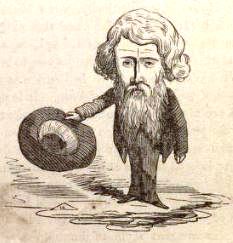
Thomas Butler Gunn was an English born illustrator, writer and war correspondent who spent fourteen years in America. His diaries of this period provide details of his life amongst the bohemian writers and artist in New York including Frank Bellew, Sol Eytinge Jr., Fanny Fern, Thomas Nast, James Parton, Fitz James O'Brien, Alfred Waud and Walt Whitman.















